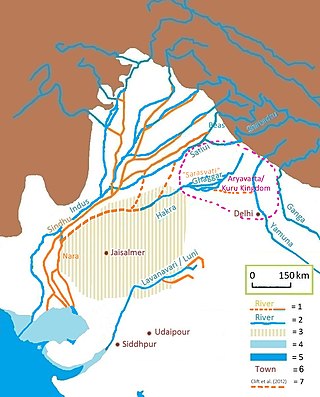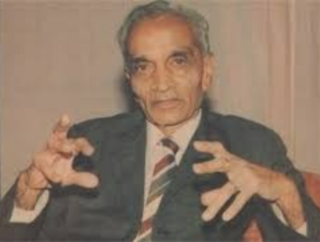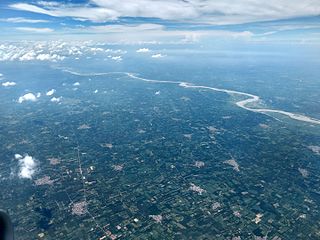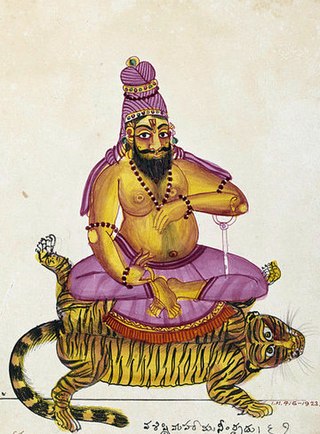Related Research Articles

The Sarasvati River is a deified mythological river first mentioned in the Rigveda and later in Vedic and post-Vedic texts. It played an important role in the Vedic religion, appearing in all but the fourth book of the Rigveda.
The Aryan race is an obsolete historical race concept that emerged in the late-19th century to describe people who descend from the Proto-Indo-Europeans as a racial grouping. The terminology derives from the historical usage of Aryan, used by modern Indo-Iranians as an epithet of "noble". Anthropological, historical, and archaeological evidence does not support the validity of this concept.

Hindu astrology, also called Indian astrology, or Jyotisha ; from jyót “light, heavenly body", and more recently Vedic astrology, is the traditional Hindu system of astrology. It is one of the six auxiliary disciplines in Hinduism that is connected with the study of the Vedas.

The historical Vedic religion, also known as Vedicism and Vedism, constituted the religious ideas and practices prevalent amongst the Indo-Aryan peoples of the northwest Indian subcontinent during the Vedic period. These ideas and practices are found in the Vedic texts, and some Vedic rituals are still practiced today. The Vedic religion is one of the major traditions which shaped Hinduism, though present-day Hinduism is significantly different from the historical Vedic religion.

David Frawley, also known as Vamadeva Shastri is an American writer, astrologer, teacher (acharya) and a proponent of Hindutva.

Subhash Kak is an Indian-American computer scientist and historical revisionist. He is the Regents Professor of Computer Science Department at Oklahoma State University–Stillwater, an honorary visiting professor of engineering at Jawaharlal Nehru University, and a member of the Indian Prime Minister's Science, Technology and Innovation Advisory Council (PM-STIAC).

Purushottam Nagesh Oak was a historical negationist from India.

Indo-Aryan peoples are a diverse collection of Indo-European peoples speaking Indo-Aryan languages in the Indian subcontinent. Historically, Aryans were the Indo-Iranian speaking pastoralists who migrated from Central Asia into South Asia and introduced the Proto-Indo-Aryan language. The Indo-Aryan peoples were known to be closely related and belonging to the same Indo-Iranian group that have resided north of the Indus River; an evident connection in cultural, linguistic, and historical ties. Today, the Indo-Aryan language speakers are found south of the Indus, across the modern-day regions of Bangladesh, Nepal, eastern-Pakistan, Sri Lanka, Maldives and northern-India.

Indo-Iranian peoples, also known as Indo-Iranic peoples by scholars, or as Arya or Aryans from their self-designation, were a group of Indo-European speaking peoples who brought the Indo-Iranian languages, a major branch of the Indo-European language family, to major parts of Eurasia in waves from the first part of the 2nd millennium BC onwards. They eventually branched out into Iranian peoples and Indo-Aryan peoples.

Michael Witzel is a German-American philologist, comparative mythologist and Indologist. Witzel is the Wales Professor of Sanskrit at Harvard University and the editor of the Harvard Oriental Series Witzel is an authority on Indian sacred texts, particularly the Vedas, and Indian history. A critic of the arguments made by Hindutva writers and sectarian historical revisionism, he opposed some attempts to influence USA school curricula in the California textbook controversy over Hindu history.
Edwin Francis Bryant is an American Indologist. Currently, he is professor of religions of India at Rutgers University. He published seven books and authored a number of articles on Vedic history, yoga, and the Krishna tradition. In his research engagements, he lived several years in India where he studied Sanskrit and was trained with several Indian pundits.
Navaratna Srinivasa Rajaram was an Indian academic.He is notable for propounding the "Indigenous Aryans" hypothesis, asserting that the Vedic period was extremely advanced from a scientific view-point, and claiming of having deciphered the Indus script. Academics find his scholarship to be composed of dishonest polemics in service of a communal agenda.

The Indo-Aryan migrations were the migrations into the Indian subcontinent of Indo-Aryan peoples, an ethnolinguistic group that spoke Indo-Aryan languages. These are the predominant languages of today's Bangladesh, Maldives, Nepal, North India, Eastern Pakistan, and Sri Lanka.

The Ghaggar-Hakra River is an intermittent river in India and Pakistan that flows only during the monsoon season. The river is known as Ghaggar before the Ottu barrage at 29.4875°N 74.8925°E, and as Hakra downstream of the barrage in the Thar Desert. In pre-Harappan times the Ghaggar was a tributary of the Sutlej. It is still connected to this paleochannel of the Sutlej, and possibly the Yamuna, which ended in the Nara River, presently a delta channel of the Indus River joining the sea via Sir Creek.

Vasishtha is one of the oldest and revered Vedic rishis or sages, and one of the Saptarishis. Vasishtha is credited as the chief author of Mandala 7 of the Rigveda. Vasishtha and his family are mentioned in Rigvedic verse 10.167.4, other Rigvedic mandalas and in many Vedic texts. His ideas have been influential and he was called the first sage of the Vedanta school of Hindu philosophy by Adi Shankara.

The horse has been present in the Indian subcontinent from at least the middle of the second millennium BC, more than two millennia after its domestication in Central Asia. The earliest uncontroversial evidence of horse remains on the Indian Subcontinent date to the early Swat culture .While horse remains and related artifacts have been found in Late Harappan sites, indicating that horses may have been present at Late Harappan times, horses did not play an essential role in the Harappan civilisation, in contrast to the Vedic period. The importance of the horse for the Indo-Aryans is indicated by the Sanskrit word Ashva, "horse," which is often mentioned in the Vedas and Hindu scriptures.

Indigenous Aryanism, also known as the Indigenous Aryans theory (IAT) and the Out of India theory (OIT), is the conviction that the Aryans are indigenous to the Indian subcontinent, and that the Indo-European languages radiated out from a homeland in India into their present locations. It is a "religio-nationalistic" view on Indian history, and propagated as an alternative to the established migration model, which considers the Pontic–Caspian steppe to be the area of origin of the Indo-European languages.

The Vedic period, or the Vedic age, is the period in the late Bronze Age and early Iron Age of the history of India when the Vedic literature, including the Vedas, was composed in the northern Indian subcontinent, between the end of the urban Indus Valley Civilisation and a second urbanisation, which began in the central Indo-Gangetic Plain c. 600 BCE. The Vedas are liturgical texts which formed the basis of the influential Brahmanical ideology, which developed in the Kuru Kingdom, a tribal union of several Indo-Aryan tribes. The Vedas contain details of life during this period that have been interpreted to be historical and constitute the primary sources for understanding the period. These documents, alongside the corresponding archaeological record, allow for the evolution of the Indo-Aryan and Vedic culture to be traced and inferred.

Aryan or Arya is a term originally used as an ethnocultural self-designation by Indo-Iranians in ancient times, in contrast to the nearby outsiders known as 'non-Aryan'. In Ancient India, the term ā́rya was used by the Indo-Aryan speakers of the Vedic period as an endonym (self-designation) and in reference to a region known as Āryāvarta, where the Indo-Aryan culture emerged. In the Avesta scriptures, ancient Iranian peoples similarly used the term airya to designate themselves as an ethnic group, and in reference to their mythical homeland, Airyanǝm Vaēǰō. The stem also forms the etymological source of place names such as Alania and Iran.

The Puranic chronology is a timeline of Hindu mythology based on the Mahabharata, the Ramayana, and the Puranas. The central dates here are the Kurukshetra War and the Lanka War with the start of the start and end of the Kali Yuga and the other yugas and all the other events in Hindu mythology. The Puranic chronology is referred to by proponents of Indigenous Aryans to propose an earlier dating of the Vedic period, and the spread of Indo-European languages out of India, arguing that "the Indian civilization must be viewed as an unbroken tradition that goes back to the earliest period of the Sindhu-Sarasvati Valley traditions ."
References
- ↑ Bryant 2001, p. 251.